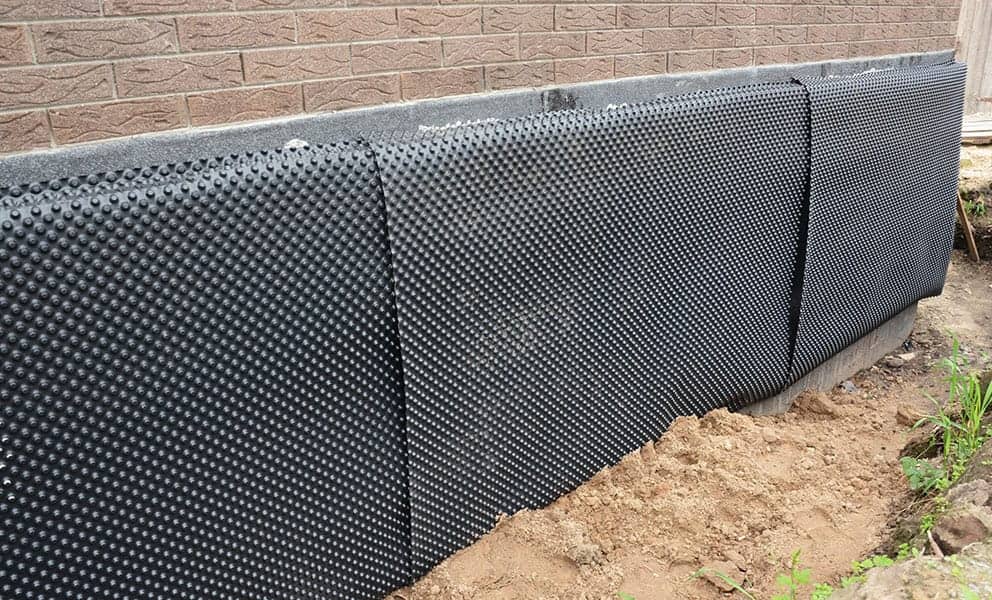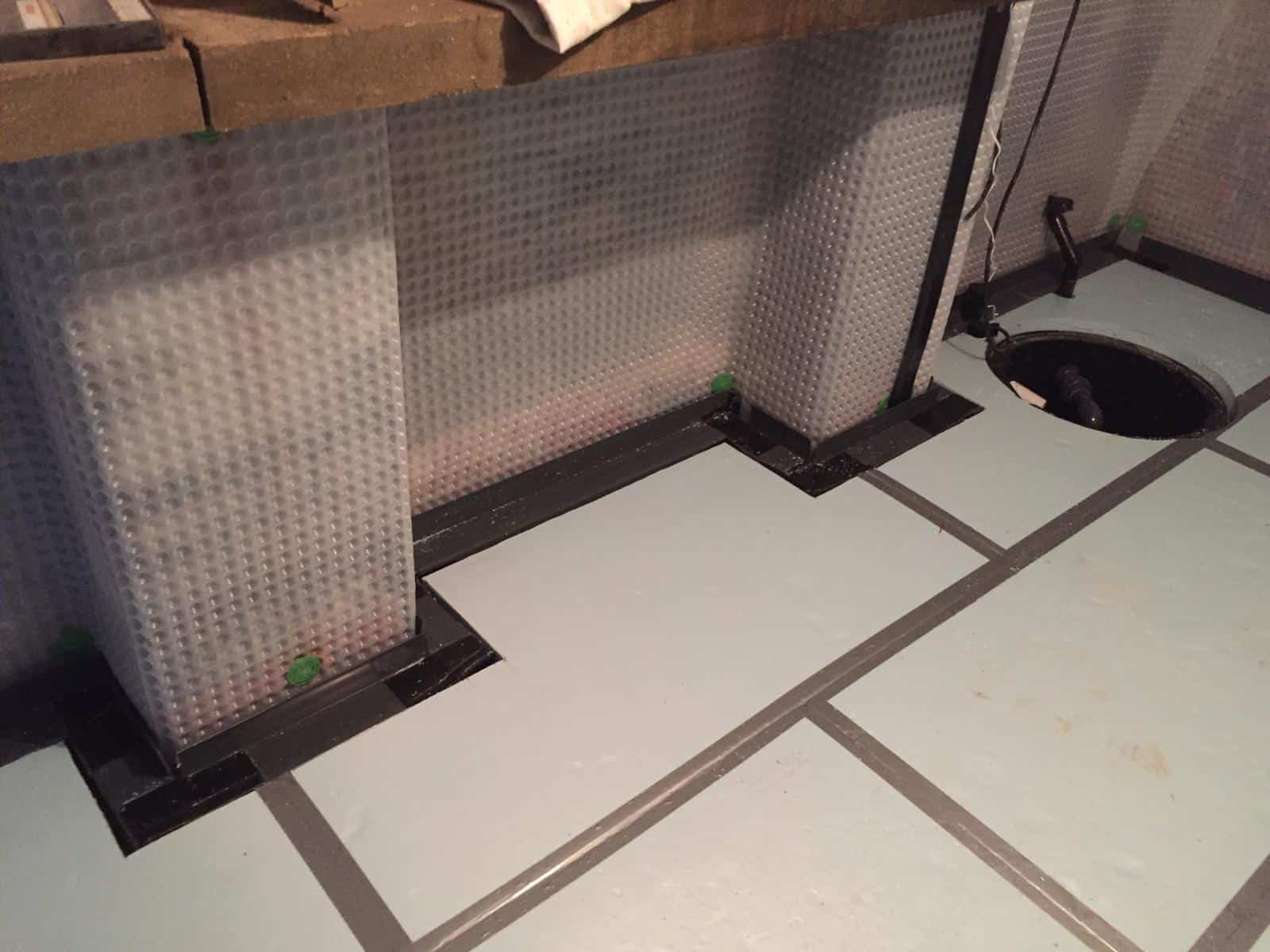Surprising signs you need damp proofing newcastle services now
Surprising signs you need damp proofing newcastle services now
Blog Article
Discovering the Numerous Techniques and Solutions for Effective Damp Proofing
Moisture in structures postures significant challenges to both architectural stability and interior air top quality. Numerous strategies and remedies have actually arised to combat this pervasive concern. From traditional damp-proof membrane layers to cutting-edge chemical therapies, each approach uses unique advantages. Recognizing these choices is essential for effective wetness control. Nevertheless, choosing the ideal solution depends on details building problems and requirements, prompting additional exploration into one of the most effective moist proofing approaches readily available.
Comprehending the Causes of Dampness
Wetness can develop from various resources, comprehending these causes is vital for reliable removal. Typically, dampness stems from three key sources: climbing moist, passing through moist, and condensation. Increasing damp occurs when groundwater takes a trip up-wards through porous products, such as brick or stone, frequently due to an absence of an efficient barrier (mould removal newcastle). Passing through damp is commonly brought on by external aspects, including roofing leaks, malfunctioning gutters, or damaged walls, allowing water to penetrate a residential property. Condensation, on the various other hand, arises from excess moisture airborne, frequently aggravated by poor ventilation and temperature level distinctions, resulting in water beads basing on surface areas. Determining these underlying problems is necessary, as each kind of wetness requires a tailored strategy for removal. Appropriate assessment aids in figuring out one of the most reliable solutions, ultimately guarding the architectural integrity of a building and boosting interior air high quality
Typical Damp-Proof Membranes

Chemical Damp-Proofing Solutions
Chemical damp-proofing options supply a cutting-edge strategy to preventing moisture intrusion in buildings. These methods generally include the application of liquid chemicals that permeate masonry and develop a barrier against rising moist. Frequently utilized chemicals consist of silanes, siloxanes, and other water-repellent agents that respond with surface materials to produce a hydrophobic layer.The application procedure typically calls for boring holes into the walls, injecting the chemical solution, and permitting it to heal. This approach is specifically beneficial for older structures where typical damp-proof membrane layers may be impractical. Furthermore, chemical damp-proofing can be less disruptive and much more affordable than comprehensive restoration projects.While effective, these services rely on appropriate application and environmental conditions for peak efficiency. Regular upkeep and surveillance are necessary to guarantee the long life of the damp-proofing treatment. Generally, chemical damp-proofing stands for a flexible alternative for safeguarding structures versus moisture-related damage
Tooth Cavity Wall Surface Building Methods
Cavity wall building and construction methods provide various benefits, especially in moisture control and power efficiency. By including an air void between two layers of masonry, these wall surfaces properly mitigate water ingress while improving insulation. This combination not only shields structures from dampness however likewise adds to reduced energy consumption.
Benefits of Tooth Cavity Wall Surfaces
When considering effective damp proofing methods, the advantages of cavity walls stand apart plainly. Tooth cavity walls consist of two separate layers, producing an air gap that successfully minimizes wetness penetration. This design reduces the risk of moisture, as the external wall surface works as an obstacle versus rain and water ingress. In addition, dental caries wall surfaces improve thermal insulation, which adds to energy performance by lowering warmth loss. They additionally give audio insulation, assisting to produce a quieter indoor environment. The air gap allows for ventilation, which helps in moisture control and minimizes the likelihood of mold development. These benefits not just boost the total convenience of a building however additionally add to its longevity and structural stability.
Wetness Control Techniques
Efficient moisture control techniques are critical in dental caries wall building to ensure long-term defense against wetness. One primary approach entails the unification of weep holes, which help with water drain from the tooth cavity, avoiding build-up. Furthermore, the usage of breathable membrane layers can help handle wetness levels while permitting caught vapor to run away. Proper placement of insulation is likewise vital, as it needs to not block water drainage courses. Moreover, making certain that the external fallen leaves of the dental caries wall surface are constructed with water-resistant materials enhances general resilience. Normal upkeep checks are essential to identify any obstructions or damage early, securing the framework's stability. Ultimately, a combination of these techniques creates a robust protection against dampness intrusion in cavity walls.
Insulation and Energy Performance
Insulation plays a vital role in boosting energy efficiency within tooth cavity wall construction. By integrating insulating products, these walls create a thermal obstacle that reduces heat loss and minimizes power intake. Reliable insulation not just helps keep a stable indoor temperature level but additionally mitigates the danger of dampness, as it prevents condensation within the wall surface dental caries. Various methods, such as the usage of rigid foam boards or mineral wool, can be used to achieve perfect insulation efficiency. Additionally, appropriate setup is vital to guarantee that voids and gaps are reduced, which can otherwise endanger power efficiency. Ultimately, a well-insulated cavity wall surface adds substantially to overall sustainability and reduces heating & cooling prices for house owners.
Exterior Damp Proofing Techniques
Outside wet proofing approaches are essential for protecting structures from wetness seepage. 2 effective methods consist of the application of water resistant membrane layers and the installation of French drains. These options help reduce water build-up and maintain the integrity of buildings.
Waterproof Membrane Application
While various methods exist for stopping wetness ingress, the application of waterproof membranes stays an extremely efficient external wet proofing technique. These membranes are usually made from products such as polyethylene, rubber, or changed asphalt, providing a robust obstacle against water infiltration. The installation process involves applying the membrane to the exterior surface areas of walls or structures, guaranteeing complete insurance coverage to stop leaks. Proper adhesion and securing at joints are vital to making the most of effectiveness. Waterproof membrane layers can be applied in various kinds, including fluid coatings and sheet membranes, permitting for versatility based upon the details demands of the framework. This approach not just safeguards structures from moisture yet also enhances their durability and structural integrity.
French Drain Installation
One reliable method for managing groundwater and preventing dampness accumulation around a structure's structure is the installment of a French drain. This drain system contains a trench full of gravel and a perforated pipe that redirects surface area water far from the structure. Correct installation needs cautious planning, making sure that the drainpipe inclines far from the framework to promote optimal water flow. In addition, the place of the drainpipe is essential; it ought to be placed in areas vulnerable to merging or excess wetness. Regular maintenance, consisting of clearing debris from the crushed rock and making sure the pipeline remains unblocked, is important for long-lasting efficiency. Ultimately, a well-installed French drainpipe can significantly decrease the risk of water-related issues in cellars and foundations.
Inside Waterproofing Strategies
Inside waterproofing methods are vital for securing a structure's inside from moisture seepage and potential water damages. These methods commonly entail the application of customized materials and techniques designed to create a dampness obstacle within the framework. One common technique is the usage of waterproof finishings or sealants on walls and floorings, which stop dampness from passing through surfaces.Additionally, installing indoor water drainage systems, such as sump pumps, can efficiently manage water accumulation in basements and creep spaces. One more technique entails using vapor barriers, which are set up to prevent moisture activity from the ground right into living spaces.Moreover, dealing with any cracks or voids in wall surfaces or structures with ideal sealers ensures a comprehensive protection versus water breach. By executing these indoor waterproofing approaches, homeowner can considerably lower the danger of mold development, architectural damages, and various other moisture-related issues. Correct execution of these strategies is necessary for lasting protection and structure honesty.
Routine Maintenance and Evaluation Practices
Normal maintenance and examination techniques are important for ensuring the long-term effectiveness of moist proofing options in any kind of structure. Routine checks enable property owners to identify very early signs of moisture intrusion, such as peeling off paint, mold and mildew growth, and stuffy odors. These indications can signal underlying concerns that call for prompt attention.Inspections ought to be performed at the very least every year, concentrating on at risk locations like cellars, creep spaces, and outside wall surfaces. Throughout these evaluations, homeowner ought to take a look at sealants, drain systems, and air flow to validate they work correctly.Additionally, maintaining downspouts and rain gutters is crucial, as stopped up systems can lead to water build-up near the structure. Carrying out a normal maintenance routine, in addition to prompt repair services, can substantially prolong the life expectancy of damp proofing procedures and shield the structural integrity of the building. Aggressive actions ultimately add to the overall health and safety of the living setting.
Regularly Asked Concerns
For How Long Does Damp Proofing Typically Last?
The duration of damp proofing performance varies, typically lasting between 20 get more info to half a century. Elements such as application top quality, environmental conditions, and maintenance techniques greatly affect the long life of the moist proofing treatment.

Can I Damp Evidence My Home Myself?
The specific pondered the feasibility of do it yourself damp proofing. With appropriate study and the best products, it is possible. They additionally acknowledged the significance of specialist support to guarantee durable performance and avoid future concerns.
What Are the Indications of Ineffective Damp Proofing?
Indications of ineffective wet proofing include relentless musty odors, visible mold development, peeling paint, wet spots on walls, and wood decay - mould treatment newcastle. Property owners ought to address these issues immediately to avoid further damages and health problems
Does Damp Proofing Affect Indoor Air High Quality?

Just How Much Does Expert Damp Proofing Cost?
Specialist wet proofing prices vary considerably, normally varying from $1,000 to $5,000 relying on the property's dimension, the extent of the moist issue, and selected methods. Each circumstance needs a tailored analysis for exact rates. Commonly, dampness originates from three main resources: increasing wet, passing through wet, and condensation. When considering effective damp proofing techniques, the advantages of tooth cavity walls stand out prominently. Outside moist proofing techniques are essential for safeguarding frameworks from wetness infiltration. While different approaches exist for preventing dampness ingress, the application of water-proof membrane layers stays a very reliable exterior wet proofing method. Indications of inefficient damp proofing include relentless stuffy smells, visible mold growth, peeling off paint, moist patches on wall surfaces, and wood decay.
Report this page